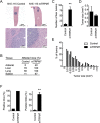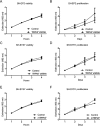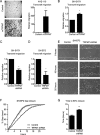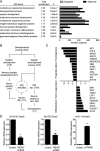TRPM7 maintains progenitor-like features of neuroblastoma cells: implications for metastasis formation
- PMID: 25797249
- PMCID: PMC4496182
- DOI: 10.18632/oncotarget.3315
TRPM7 maintains progenitor-like features of neuroblastoma cells: implications for metastasis formation
Abstract
Neuroblastoma is an embryonal tumor derived from poorly differentiated neural crest cells. Current research is aimed at identifying the molecular mechanisms that maintain the progenitor state of neuroblastoma cells and to develop novel therapeutic strategies that induce neuroblastoma cell differentiation. Mechanisms controlling neural crest development are typically dysregulated during neuroblastoma progression, and provide an appealing starting point for drug target discovery. Transcriptional programs involved in neural crest development act as a context dependent gene regulatory network. In addition to BMP, Wnt and Notch signaling, activation of developmental gene expression programs depends on the physical characteristics of the tissue microenvironment. TRPM7, a mechanically regulated TRP channel with kinase activity, was previously found essential for embryogenesis and the maintenance of undifferentiated neural crest progenitors. Hence, we hypothesized that TRPM7 may preserve progenitor-like, metastatic features of neuroblastoma cells. Using multiple neuroblastoma cell models, we demonstrate that TRPM7 expression closely associates with the migratory and metastatic properties of neuroblastoma cells in vitro and in vivo. Moreover, microarray-based expression profiling on control and TRPM7 shRNA transduced neuroblastoma cells indicates that TRPM7 controls a developmental transcriptional program involving the transcription factor SNAI2. Overall, our data indicate that TRPM7 contributes to neuroblastoma progression by maintaining progenitor-like features.
Keywords: differentiation; metastasis; neuroblastoma; snai2; trpm7.
Conflict of interest statement
The authors declare no conflict of interests.
Figures





References
-
- Morgenstern DA, Baruchel S, Irwin MS. Current and future strategies for relapsed neuroblastoma: challenges on the road to precision therapy. J Pediatr Hematol Oncol. 2013;35:337–47. Epub 2013/05/25. - PubMed
-
- Mohlin SA, Wigerup C, Pahlman S. Neuroblastoma aggressiveness in relation to sympathetic neuronal differentiation stage. Seminars in cancer biology. 2011;21:276–82. Epub 2011/09/29. - PubMed
Publication types
MeSH terms
Substances
LinkOut - more resources
Full Text Sources
Other Literature Sources
Medical
Molecular Biology Databases
Research Materials
Miscellaneous

